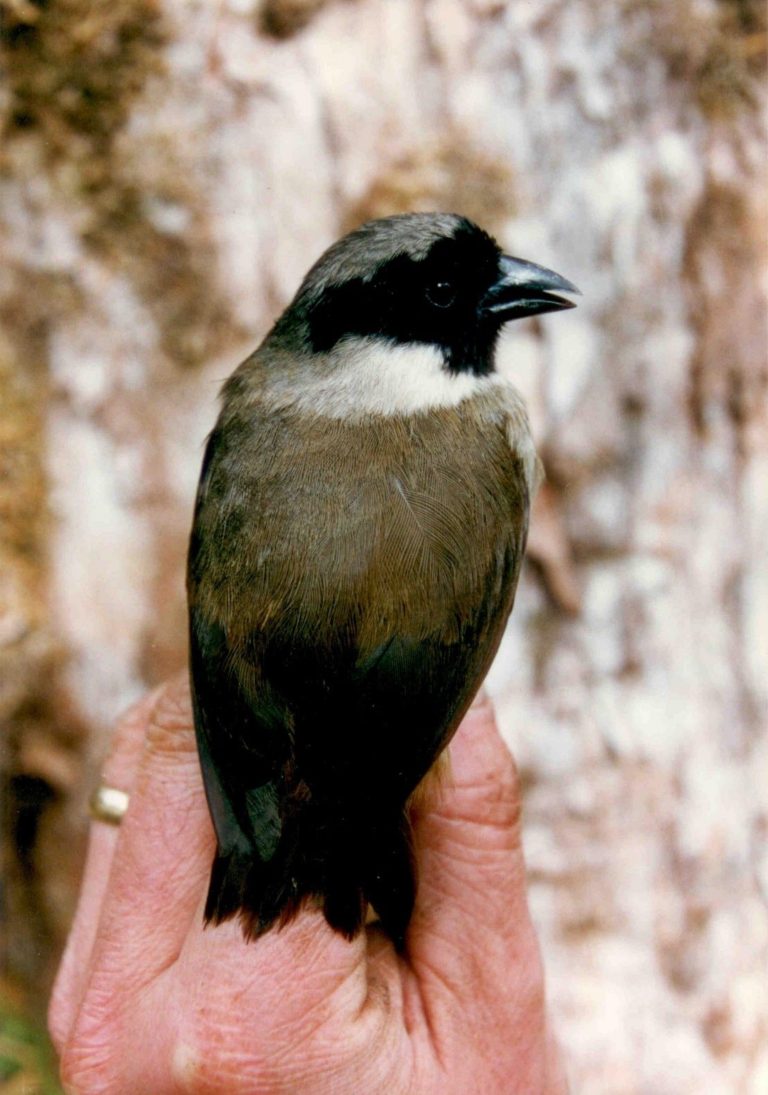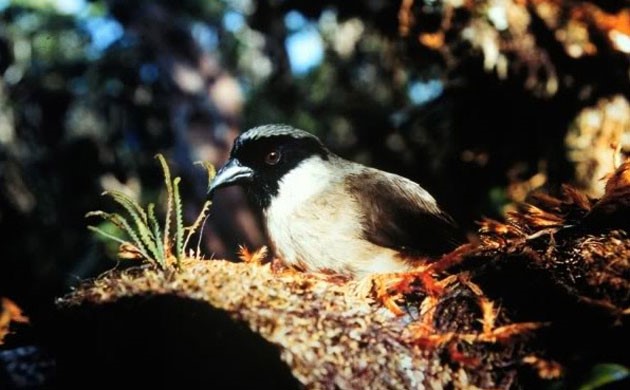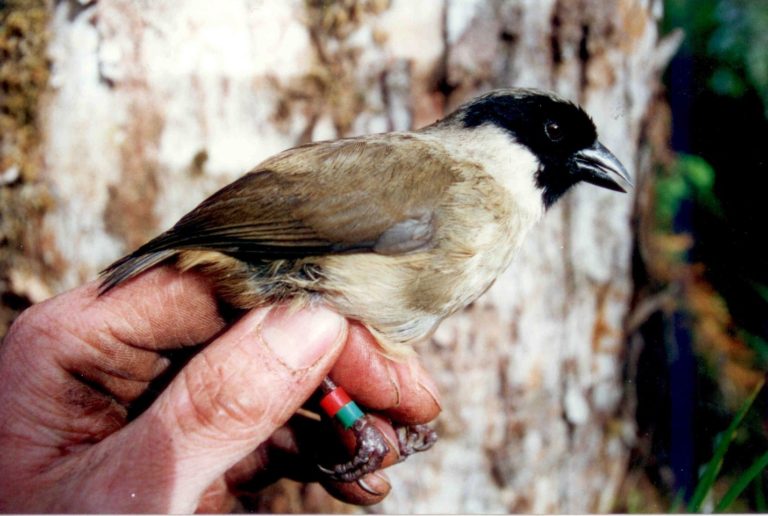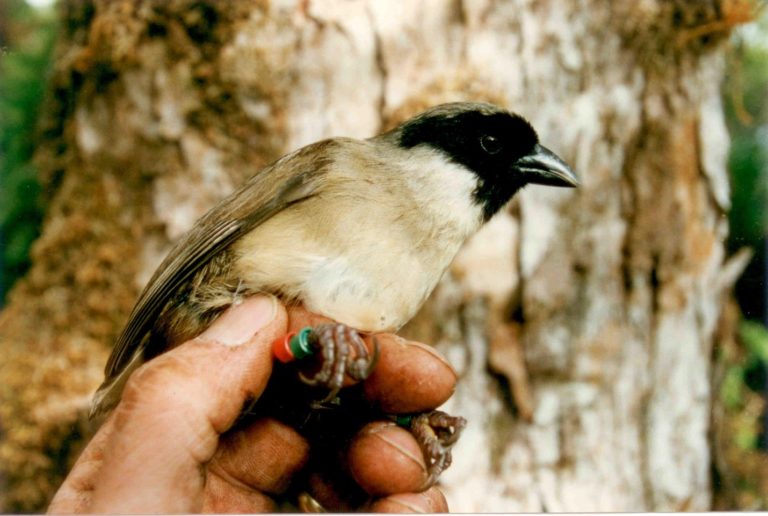Birdfinding.info ⇒ The Po’o-uli was unknown until 1973, when students from the University of Hawaii discovered a small population in the remote upper Hanawi drainage on the northeastern slopes of Mount Haleakala. After its first contact with humanity, the species persisted for about three decades until the last known individual died in 2004. All documented records were within a few miles of the discovery site.
Po’o-uli †
Melamprosops phaeosoma
Endemic to Maui, but presumed to be extinct. Inhabits, or inhabited, the undergrowth of ohia forests between 1,400 and 2,100 m elevation.

The known range of the Po’o-uli is represented by the polygons “IN 1” and “IN 2.” (Mountainspring et al. 1990)
The habitat where it made its last stand was at the edge of its tolerance. Fossil evidence shows that it had occupied drier forests at lower elevations, but it was eliminated from those areas—likely by mosquito-borne malaria, as in several other Hawaiian birds with similar extinction stories.
When initially discovered, the Po’o-uli occurred at fairly high densities in a very small area. The first population estimate, in 1975, was approximately 750 in an area of about 10 square kilometers. It declined rapidly, however, to about 140 in 1980 and 80 in 1985.
Surveys in 1989-93 turned up none, then more intensive surveys in 1994-96 located six, which dwindled to three by 1997. These last known Po’o-ulis were two males and a female, each occupying its own small territory and unlikely to encounter either of the others.
In 2002 the U.S. Fish & Wildlife Service captured the female and relocated her by 2 km to one of the males’ territory, but she promptly returned to her own territory. Those two were last detected in December 2003 and February 2004, respectively. The other male was captured in September 2004. It had a wounded eye and malaria, and died in captivity on November 26, 2004.
Identification
A stout, aberrant honeycreeper with a deep-based, decurved bill, and a striking midnight-black mask over much of its head, bordered by a gray crown and whitish partial collar. The upperparts were mostly neutral-brown and the underparts were shaded from pale grayish-tan on the breast and sides to buffy or cinnamon on the vent.

Po’o-uli. (Upper Hanawi Natural Area, Maui, Hawaii; January 15, 1997.) © Paul Baker / HAS Education File

Po’o-uli. (Upper Hanawi Natural Area, Maui, Hawaii.) U.S. Fish & Wildlife Service

Po’o-uli. (Upper Hanawi Natural Area, Maui, Hawaii; January 15, 1997.) © Paul Baker / HAS Education File
Notes
Monotypic species.
IUCN Red List Status: Critically Endangered (Possibly Extinct).
References
BirdLife International. 2019. Melamprosops phaeosoma. The IUCN Red List of Threatened Species 2019: e.T22720863A153774712. https://dx.doi.org/10.2305/IUCN.UK.2019-3.RLTS.T22720863A153774712.en. (Accessed May 14, 2020.)
Hume, J.P. 2017. Extinct Birds (Second Edition). Bloomsbury Publishing PLC, London.
Mountainspring, S., T.L.C. Casey, C.B. Kepler, and J.M. Scott. 1990. Ecology, behavior, and conservation of the Poo-uli (Melamprosops phaeosoma). Wilson Bulletin 102:109-122.
Pratt, H.D. 2005. The Hawaiian Honeycreepers: Drepanidinae. Oxford University Press.
Pratt, H.D., and C.J. Sharpe. 2020. Poo-uli (Melamprosops phaeosoma). In Handbook of the Birds of the World Alive (J. del Hoyo, A. Elliott, J. Sargatal, D.A. Christie, and E. de Juana, eds.). Lynx Edicions, Barcelona. https://www.hbw.com/node/61430. (Accessed May 9, 2020.)
Pyle, R.L., and P. Pyle. 2017. The Birds of the Hawaiian Islands: Occurrence, History, Distribution, and Status. Version 2 (January 1, 2017). http://hbs.bishopmuseum.org/birds/rlp-monograph/. B.P. Bishop Museum, Honolulu, Hawaii.
